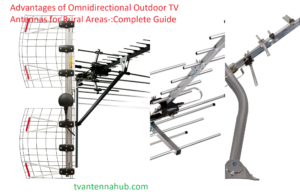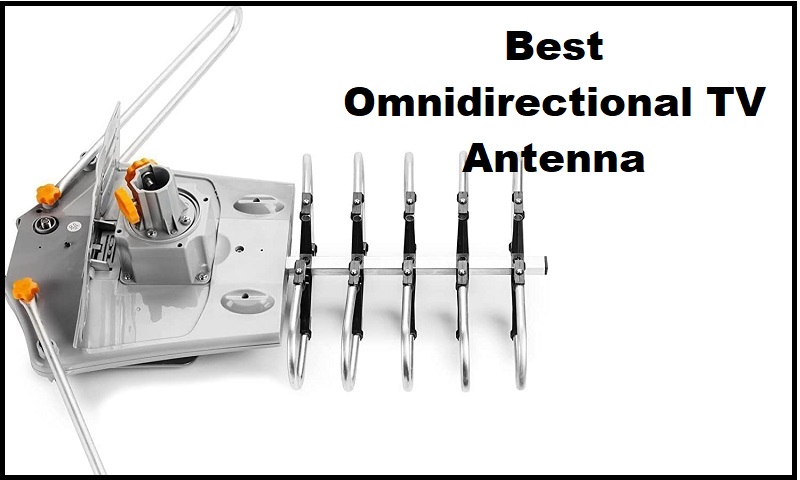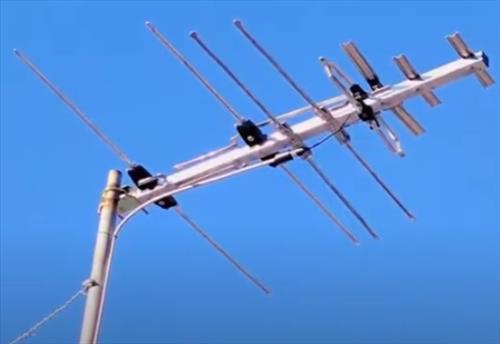 Are you living in a rural area, but frustrated with interrupted or grainy TV signals?
Are you living in a rural area, but frustrated with interrupted or grainy TV signals?
Omnidirectional outdoor TV antennas are the perfect solution for your needs. With this guide, you will learn how an omnidirectional antenna boosts signal strength and provides better HDTV reception.
The availability of television programming has grown vastly over the years, allowing for ever-improving video and audio quality. However, in certain rural areas access to signals may be difficult or impossible due to obstructions from hills or other geographic features. In such cases, an omnidirectional outdoor TV antenna may be a viable solution for improving signal reception. In this guide, we will explore the advantages of using an omnidirectional antenna for rural areas.
By definition, an omnidirectional antenna is designed to receive signals from any direction without having to rotate or move it. These antennas are advantageous because they are relatively inexpensive and portable compared with traditional satellite dishes; they can therefore be set up quickly and conveniently wherever signal reception is needed most. Additionally since these antennas receive signals from all directions they can help ensure against sudden outages due to short term obstacles like sunspots or other interference typically associated with satellite systems.
Furthermore when properly installed and adjusted an omnidirectional outdoor TV antenna can provide improved signal quality by reducing or eliminating pesky distractions like ghosting and snow in the picture as well as improving overall sound quality; this is often especially true when compared with indoor antennas where signal strength is more limited by walls and other obstacles that may leak signals outside the receiving area. Additionally many modern antennas also include digital tuning controls allowing for fine tuning of individual channels which improves picture clarity even further – a feat not possible with traditional “rabbit-ears” antennas indoors!
Explanation of outdoor TV antennas
Outdoor television (TV) antennas are used to receive TV signals from broadcast towers located within a certain range. The number of channels that you can get depend on the towers’ availability, your location, and the type of antenna being used. For rural areas with lower population density, there is less competition for signal, thus making it easier for an antenna to receive multiple channels from long-distance broadcast towers.
Omnidirectional outdoor TV antennas are a popular choice for rural areas because they can receive signals from all directions with a single antenna. This is particularly advantageous when there are multiple broadcast towers located all around one’s residence or if the location is surrounded by high trees and buildings. Such obstacles cause additional signal interference problems that omnidirectional antennas can help to overcome easily.
Moreover, omnidirectional outdoor TV antennas come in different sizes which make them versatile and ideal for different locations and applications — they can range from large commercial Yagi-Uda arrays to compact home models suitable for urban areas where space may be limited. With such variety, these outdoor TV antennas give consumers more freedom in terms of installation area selection, whether placed on rooftops or walls fitting any desired aesthetic look while achieving improved reception quality even in difficult terrains such as mountainous regions or oceanfronts.
Importance of TV antennas in rural areas
The use of television antennas in rural areas is necessary for receiving strong and reliable signals from a long distance broadcast. Rural areas are usually far from broadcasting towers, making it difficult to get a clear signal. Without an antenna, you would not be able to watch any free HDTV channels. Moreover, TV antennas are important for people living in remote areas who do not have access or are unable to afford cable or satellite TV services.
Omni-directional outdoor TVs antennas have several advantages when compared to other types of antennas such as Yagi and Other types of directional antennae. Unlike these directional antennae, omni-directional outdoor TVs can receive broadcasts from 360-degree directions without needing to be adjusted with the location of the broadcasting tower. This makes them ideal for rural areas due to their convenient coverage and lack of complexity when compared with other antenna types.
Specifically, these antennas offer wider frequency response range which can pick up signals even in the presence of obstructive buildings and terrain making them ideal for locations that cannot access a reliable VHF/UHF signal broadcast otherwise. Additionally, since omni-directional outdoor TVs are lightweight and averagely sized they are easily mounted on rooftops or other elevated spaces allowing them greater access to unrecognized VHF/UHF signals which will provide greater accessibility opportunities for viewers in rural areas compared to viewers in urban areas without an omnidirectional antenna setup.
Overview of omnidirectional outdoor TV antennas
Omnidirectional outdoor TV antennas are an ideal choice for many rural areas. They provide access to all the major broadcast networks without the need for complex aiming or multiple units. There are several advantages to choosing an omnidirectional outdoor TV antenna, including:
- Wide coverage area – Because the antenna does not need to be aimed in a specific direction, it picks up signals from all directions. This makes them great for receiving signals from multiple base transmission towers.
- High signal strength – They have a very powerful range, which can pick up signals even when there is interference on one side of the antenna. The higher power range allows you to receive more channels with clearer sound and picture quality.
- Easy installation – Because they are usually much simpler than traditional directional antennas, they can be easily installed in any location with minimal effort and no technical expertise needed.
- Cost-effective – Omnidirectional outdoor TV antennas cost much less than directional antennas and require less upkeep over time as well. This means that they will save you money in the long run as you only have to pay once for installation and then maintain them every few years.
Advantages of Omnidirectional Outdoor TV Antennas
Omnidirectional outdoor TV antennas are used in rural areas and provide the best possible reception of digital broadcast signals. They offer several advantages over conventional indoor or outdoor directional antenna systems.
Firstly, they require no additional power and don’t have to be connected to a cable nor point in a specific direction. Secondly, they don’t need to be moved or repositioned depending on where the signal is being received from.
Thirdly, they can pick up signals from all directions in a given area, ensuring that you receive all available signals available in your area. Finally, they are less expensive than directional antennas and occupy less space making them ideal for locations with limited space for large antennas such as patios and decks.
Ability to receive signals from all directions
One of the main advantages of using an omnidirectional outdoor TV antenna in rural areas is that it has the ability to receive signals from all directions, making it one of the best options for reception. Omnidirectional antennas are able to pick up low-powered TV signals in a 360-degree field, meaning that they don’t require pointing in any particular direction. This capability makes them ideal for country residences where local TV stations broadcast from a variety of directions.
Another great advantage of an omnidirectional antenna is that it can be set up and used fairly quickly with minimal effort on the user’s part. As long as the antenna has been properly connected and mounted, you can have your television tuned in to your local TV station within minutes. Omnidirectional antennas also often come at a lower cost than their multi-directional counterparts and have less setup time required.
No need for constant readjustment
Omnidirectional outdoor TV antennas have the great advantage of not requiring constant readjustment when it comes to viewing channels. This is an especially useful feature when it comes to rural areas, because there is often only limited access to certain broadcast stations. Therefore, an omnidirectional outdoor TV antenna is the perfect option for those who live in remote locations and want the peace of mind that they can watch their favorite programming without having to go outside and sporadically rescan their antennas whenever new TV transmitters are set up in their area.
Moreover, no electricity or extra wiring is required as these antennas rely on passive reception methods.
Factors to Consider When Choosing an Omnidirectional Outdoor TV Antenna
When selecting an omnidirectional outdoor TV antenna for a rural setting, there are several factors that need to be taken into consideration. It is important to determine which type of antenna is best suited for your location, the terrain and distance from broadcast towers. Here are some of the most important factors you should consider when selecting an omnidirectional outdoor TV antenna:
-Broadcast Range: Omnidirectional antennas have a limited broadcast range due to their design and should only be used if your home is within 30-35 miles of broadcast towers. Beyond this range, signals may become too weak or distorted due to interference caused by mountains or other obstructions.
-Gain: Gain levels indicate how much power the antenna will require in order to receive the signal transmitted. A higher gain means better reception but also higher power requirements and a shorter coverage range. Antennas should always be chosen according to the size of their broadcast area in order to get maximum performance from them.

-Weather resistance: Outdoor antennas must generally be able to withstand rough weather conditions such as wind and rain without compromising their performance. Look for models that are rated for extreme weather conditions if you live in an area with particularly harsh weather patterns throughout the year.
-Mounting options: Most omnidirectional outdoor antennas feature universal mounts that can accommodate various roof pitches and angles, but double check beforehand since some models may require additional mounting brackets or hardware depending on the roof structure in your home.
Range and signal strength
When compared to indoor antennas, outdoor antennas feature larger antenna elements that can capture more TV signals from a variety of directions. This makes OUTDOOR antennas more suitable for rural users because coverage area can be larger and wider. The large dish also helps direct and boost the signal to produce higher sound/picture quality.
For example, an omnidirectional antenna with a gain of 7 dBi (decibel) should provide stronger signal reception than an indoor antenna with a gain of 3 dBi. That means regardless of the location or direction, the antenna should be able to pick up clearer signals over greater distances and less interference.
Durability and weather resistance
Omni-directional antennas feature toughness and good resistance to weather. Made with rust-proof materials, they are capable of withstanding extreme temperatures, sun exposure, high speeds of wind and rainfall. Though their material might vary depending on the price or the brand, most antennas come in a robust design that is built to last.
This makes them ideal for installation in areas where regular inclement weather is common, such as rural areas. Additionally, these antennas make for excellent indoor solutions for those looking for an alternative to costly cable TV subscriptions.
With proper installation and care, these antennas can keep your home connected with your favorite shows regardless of the weather conditions on the outside.
Compatibility with TV and other devices
Omnidirectional outdoor TV antennas offer great advantages in rural areas, as they are compatible with any type of TV, satellite, or cable system that is available — traditional or digital. They can also be used with HDTVs, projectors, and video gaming systems.
This means that customers in rural areas can use a single antenna to receive a wide range of channels from different systems without having to switch the setup. In addition to this advantage, the antenna is designed to adjust itself for the most optimal signal reception depending on the location of your home. This makes it reliable and efficient for rural customers who require an all-encompassing solution when setting up their TV or entertainment system.
Conclusion

To conclude, For some rural areas with no cable or satellite connection, an omnidirectional TV antenna is a great way to watch your favorite local programming. These reliable, easy-to-install antennas provide the best reception in areas with long ranges of visibility, typically of up to around 150 miles.
Moreover, unlike directional antennas that need to be precisely aimed at the broadcast tower in order to get reception, an omni antenna can pick up signals from any direction with equal clarity. This makes it especially beneficial for those living in remote rural areas or along vast expanses of open land.
Finally, if you are worried about signal interference due to many factors such as nearby trees, wiring or walls of your neighborhood house then an omni outdoor antenna is certainly your best choice since they are designed to naturally reject interference and provide better performance.
FAQ’s
What is the advantage of omnidirectional antenna?
The advantage of an omnidirectional antenna is that it can receive signals from all directions, making it easy to use and requiring minimal adjustment.
Which antenna is best for rural areas?
A directional antenna with high gain is typically the best option for rural areas as it can help overcome the distance between the transmitter and the receiver.
What are the advantages of omnidirectional?
The advantages of an omnidirectional antenna include ease of installation and use, minimal adjustment requirements, and the ability to receive signals from all directions.
Are omnidirectional antennas any good?
Yes, omnidirectional antennas are good for certain situations such as urban or suburban areas with scattered transmitters where signals are coming from multiple directions.
What is a disadvantage of an omnidirectional device?
A disadvantage of an omnidirectional device is that it may not be as effective as a directional device in scenarios where specific directionality is needed, such as in long-range communication or surveillance.
What is the gain of omnidirectional antenna?
The gain of an omnidirectional antenna depends on the design and type of antenna. Generally, omnidirectional antennas have lower gain than directional antennas.
Which is better omnidirectional or directional?
The better antenna depends on the specific situation. In general, an omnidirectional antenna is easier to install and use, while a directional antenna offers better range and resistance to interference.
Where are omnidirectional antennas used?
Omnidirectional antennas are commonly used for TV and radio reception in urban or suburban areas where signals are coming from multiple directions.
What is the range of omnidirectional antenna?
The range of an omnidirectional antenna depends on various factors such as the strength of the signal, the frequency of the signal, and the terrain. In general, an omnidirectional antenna has a shorter range than a directional antenna.
Do I need an omnidirectional TV antenna?
Whether you need an omnidirectional TV antenna depends on your location and the number and direction of TV transmitters in your area. In some cases, an omnidirectional antenna may be the best option, while in others a directional antenna may be more effective.
see also….
- Best TV Antenna For Boats 2023
- Best TV Antenna For Metal Building 2023
- Best tv antenna for rural areas 2023
- Best TV Antenna For Rural Hilly Area 2023
- Best tv antenna for rural wooded area 2023

